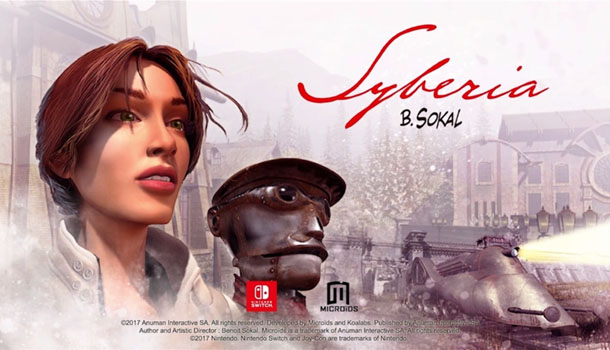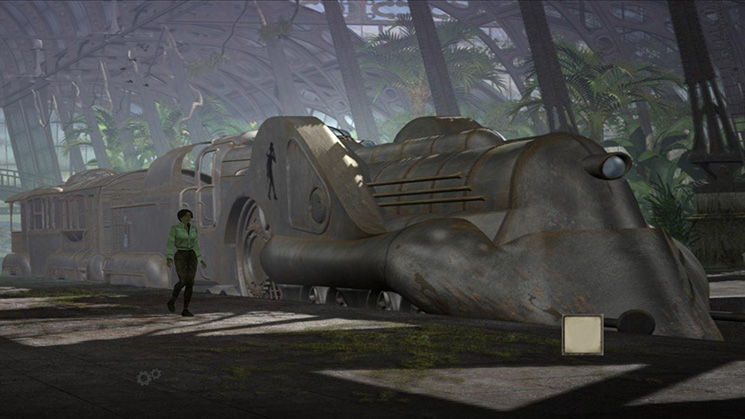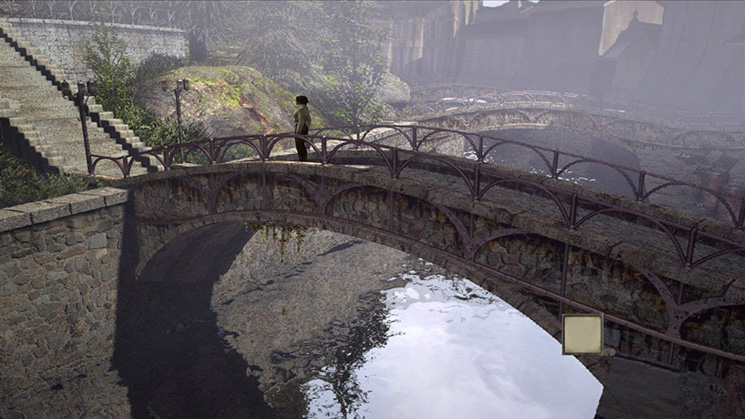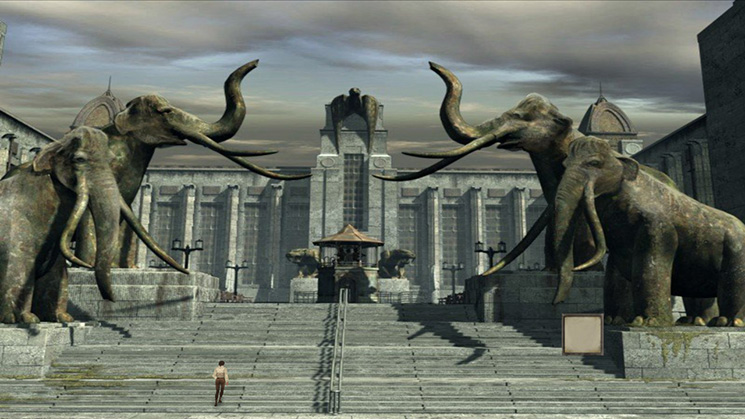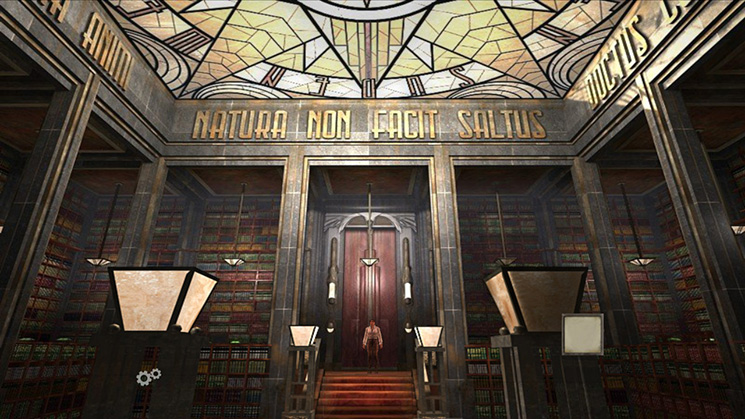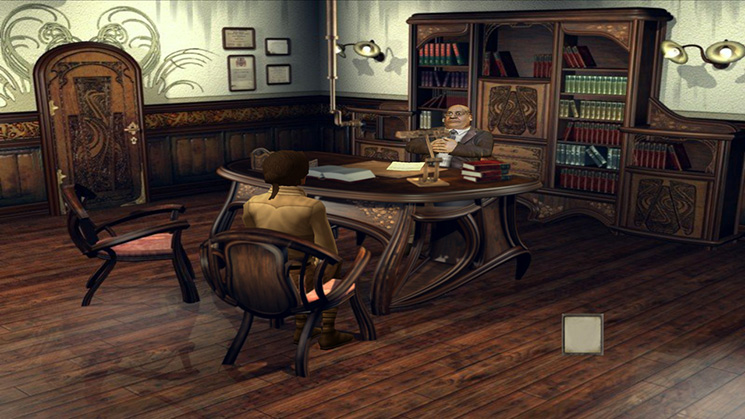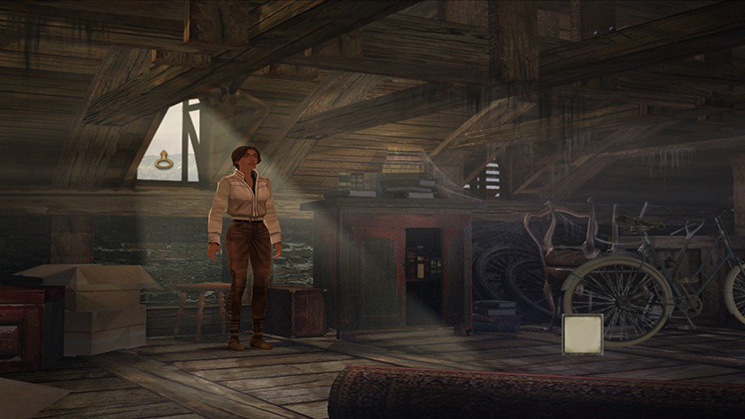Adventure titles have changed so much over the years. What were once grand adventures have become set pieces for hidden object games and other genres. While some of those have actually been interesting, they don’t really hold a candle to those that came before and very few that follow. As an avid fan of adventure titles, I’ve played many of the best the gaming industry has to offer including the acclaimed Microïds’ 2002 Benoît Sokal hit Syberia. This classic of the adventure genre comes to a new home on the Nintendo Switch this year in light of the release of the worldwide release the series’ next chapter.
Syberia follows the story of young American lawyer Kate Walker who gets more than she bargains for when tasked with a seemingly simple negotiation for the purchase of a famed automaton factory for a multinational toy company. As she soon finds out things are not as simple as she embarks on a journey that she, nor I, will ever forget to find the genius behind the factory’s amazingly detailed automatons. Just don’t call them robots, no sir, purely mechanical these marvels are.
 The biggest marvel for me with Syberia outside of its memorable story and cast is how well it’s been adapted and made very accessible to the Switch’s control scheme. Though much of the transition from the original mouse-controlled gameplay had already been handled before with its 2003 original Xbox release, the Switch version features new options with the addition of a touchscreen. While the touchscreen is mainly used for inventory interactions while in the Switch’s portable mode it is a welcome addition.
The biggest marvel for me with Syberia outside of its memorable story and cast is how well it’s been adapted and made very accessible to the Switch’s control scheme. Though much of the transition from the original mouse-controlled gameplay had already been handled before with its 2003 original Xbox release, the Switch version features new options with the addition of a touchscreen. While the touchscreen is mainly used for inventory interactions while in the Switch’s portable mode it is a welcome addition.
More importantly I’m also glad that they kept the interface and primary controls nearly identical to the previous console release. The analog controls are a little touchy when navigating through multiple input option screens like a factory control panel seen early on in the game since this version utilizes a node point system instead of a freeform one though. Chief amongst the changes that really helps with character movement on the Switch is the setting of the run buttons to the triggers for comfortable playing sessions.
Syberia has always been a great example on how to do an adventure title right with its intricate use of puzzles to progress through the story. Starting in the fictional French village of Valadilène, players will soon take control of Kate as you figure your way through the game’s dreary opening act. Like most entries in this genre, players must explore every avenue available to them as well as interact with many of the game’s inhabitants figure out the next move. You are not left without guidance though as you have a notebook that catalogs what you still need to do without really telling you exactly what needs to be done to still keep the adventure fun.
A lot of the major transition points usually revolve around conversation moments with characters with players selecting topics from Kate’s notebook. Depending on where you are in your progress or who you’ve talked to more options may open up. The rest involves gathering items and often interacting with either people or objects in the environment with the correct item equipped. Depending on which Switch mode you’re playing you can quickly use the touch screen to select these items or with a few button presses. What I really liked most about Syberia is, that outside of a few standard adventure fare mechanics, the primary source of puzzles are some form of clockwork mechanisms including a wicked cool clockwork locomotive.
Oh, and I can’t forget to mention the very protocol centric automaton Oscar who you spend much of your adventure with once you find him. His stickler for the rules “robotic” persona, even when it is completely absurd, plays well against Kate’s professional but more casual human ideology. Kate’s voice actor, Sharon Mann, is the only real constant in the series and delivers her performance beautifully here. This is a good thing as all of dialogue selections are fully spoken. Syberia also features a rather odd cast of voiced characters each with their own idiosyncrasies including an underlying story involving Kate’s fiancé and even her own mother.
Back in 2002, Syberia was a stunning game visually with its blend of clockpunk and art nouveau. In some parts, Syberia holds up remarkably well after all these years especially in the areas of environmental design, cut scenes and character models especially in Kate’s design. Other models don’t hold up so well and that’s really where Syberia shows its age. It’s more noticeable when playing the Switch in its docked TV mode but actually looks pretty decent on the smaller screen. This version of Syberia also features the ability to play it in its original 4:3 format or in a full-screen presentation. For nostalgia’s sake, I played in primarily in its original form as I found the game too stretched out in its other option.
Players of the original versions may also notice the removal of some areas such as a section of the main street of Valadilène where some inconsequential locations and characters were removed. Newcomers won’t notice these omissions, but it really doesn’t subtract that much out of the majority of the experience even though I did miss it. They did manage to do a really good job of making the transition of this early missing area seamless though so you would never know something wasn’t there otherwise. Syberia on the Switch may not be the perfect version with the few modifications that made things a little trickier than was necessary but it’s a commendable port.
Syberia is already among the classics of the adventure gaming world so it’s awesome that fans alike can experience it in a whole new way. The Switch also offers plenty of ways for players to sit back and enjoy this adventure that features just the right mix of atmosphere, storytelling and puzzle solving so that even newcomers can enjoy it wherever they are. If you want to see adventure games as they were meant to be experienced, then you have to check out Syberia for the Nintendo Switch via download or physical copy today.

